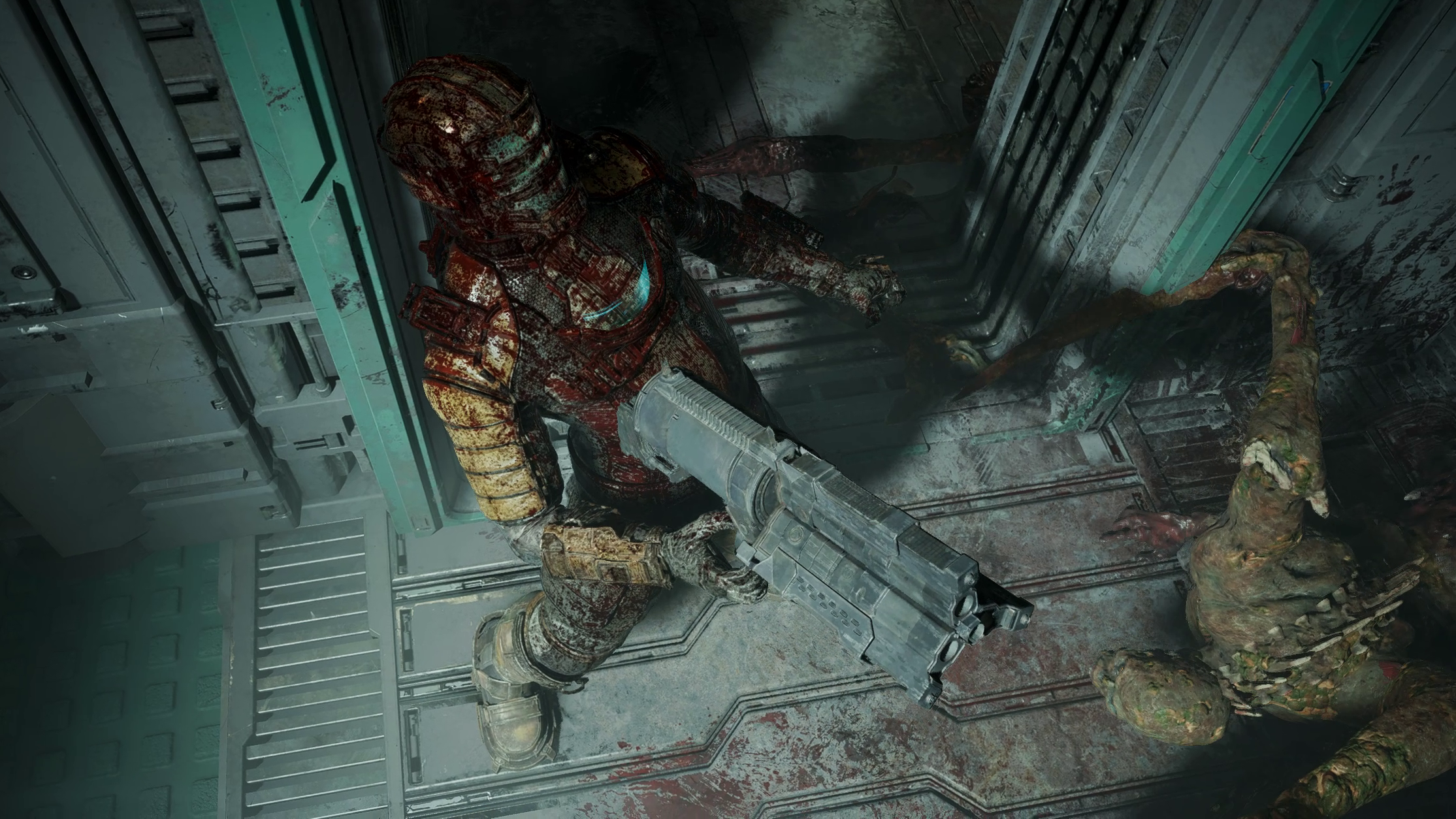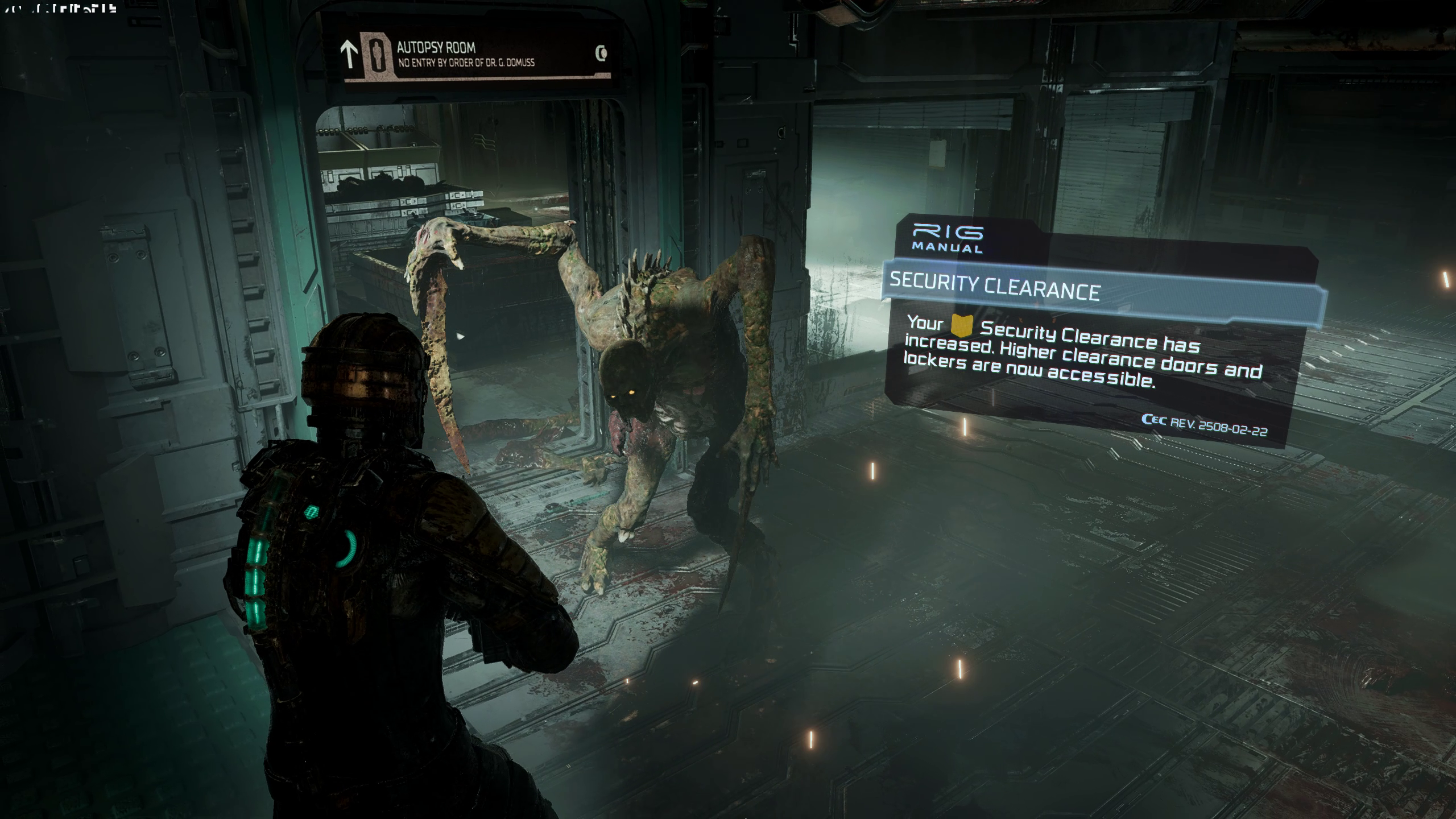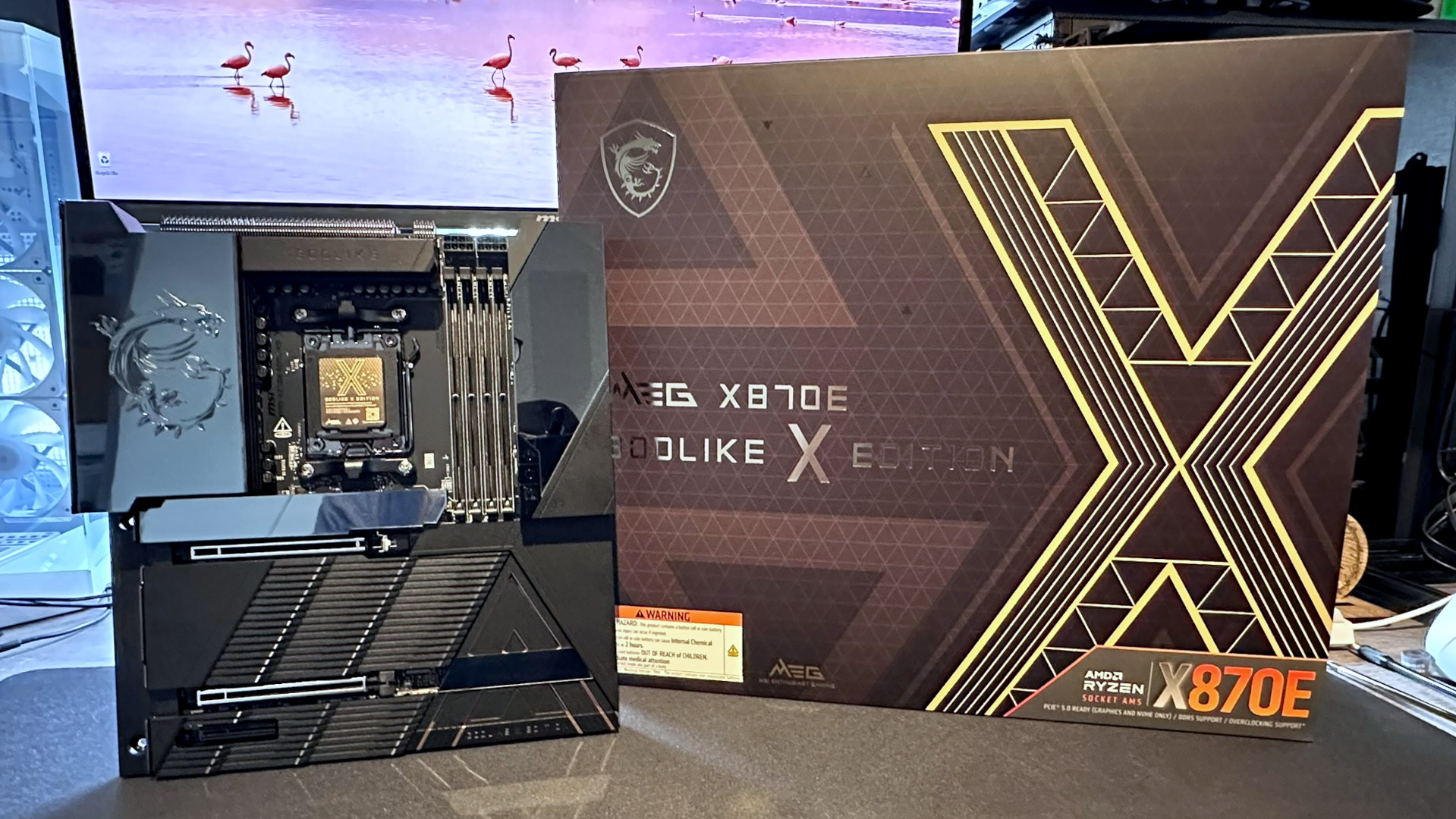Playing the Dead Space remake made me realize I totally misremembered Dead Space
The video calls, kinesis puzzles, and bad mouse controls had gotten a bit hazy over 14 years.

When I think of the first Dead Space, I picture voiceless engineer Isaac Clarke creeping through the corridors of the mining ship Ishimura, accompanied only by the groans of iron joints and the roars of reanimated corpses. His face is always obscured by the three glowing green bars on his helmet—like Sam Fisher if he were a BioShock character—and his only human company comes from warnings finger-painted onto the walls in blood.
My memory is such garbage.
I recently played the first few chapters of the upcoming Dead Space remake at one of EA's offices, and as Isaac arrived at the Ishimura, helmet off, standing among the chatty crew of an emergency repair ship, I wondered why Motive Studio would so brazenly defy the lonely mood of the original. My first hint that I was the one who was wrong came while talking to another player about the gross eyeball scene we'd both been bracing for. He realized before me that the scene we were thinking of happened in Dead Space 2, not Dead Space.
I was at least correct in remembering that Isaac doesn't speak in the original Dead Space (he does here, in moderation), but the impression of solitude it left on me wasn't accurate at all. Isaac's got a girlfriend for crying out loud, and in the original and the remake, a pair of crewmates and others bug him with video calls throughout the ordeal on the Ishimura. Even the dead talk to him, because before their corpses became puppets for alien DNA, they recorded their day-to-day concerns in audio logs that they carelessly left scattered throughout the ship's facilities. I'd forgotten how big of a buzzword "environmental storytelling" was back in 2008. BioShock and Fallout 3 were full of audio diaries and Pompeii-style corpse poses, too.
Vertical slice
So it turns out that the Dead Space remake is pretty faithful to the game I played in 2008. As engineer Isaac Clarke—controlled from a close third-person-perspective—you carve up the alien undead as you move through the Ishimura fixing its busted systems. The alien carving is most memorably done with the plasma cutter, a tool which shoots vertical or horizontal lines that sever the fang-like limbs of the "necromorphs." In the late 2000s, limb-severing technology was still pretty hot. A few years earlier, we'd been achieving similar results flinging sawblades around with the Gravity Gun in Half-Life 2's Ravenholm, a level which was far too short for how fun it was. Dead Space was more or less the answer to the question, "Why not make the whole game out of Ravenholm?" It smartly made the normal guns backup weapons, and the main gun the cool, unconventional one that slices off limbs.
The plasma cutter is as much fun in the remake as it was in the original. The only big difference is that the rotten skin of the necromorphs is no longer a blurry mess of pus and blood-colored pixels. It's shiny, and it peels away to reveal pink muscle. Graphics are the one area where my false memory aligns with the new Dead Space: It looks like how I remember Dead Space looking 14 years ago, even though the original couldn't have looked nearly this complex, gross, or realistically lit. I love that Isaac's big stomps—used to squish necromorph corpses, causing ammo or money to pop out—are still animated in the chunky, not-quite-natural way popular at the height of the Gears of War era.
Something else that had gone fuzzy in my memories were Isaac's techo-magical powers; Dead Space had more parallels with BioShock than I recalled. The telekinesis ability is most fun to use for chucking spear-shaped debris at the necromorphs, pinning them to walls like the nailgun in FEAR. I'm less delighted by its role in moving boxes, sticking big batteries in big battery slots, and reconnecting gears. There's also a stasis ability used for sticking objects together and slipping through malfunctioning doors. It's more artificial-feeling than I remember, with glowing magnet stickers telling you when it'd be a good idea to try manipulating them. But that's how it was in the original, too.
Keep up to date with the most important stories and the best deals, as picked by the PC Gamer team.
What's new
The remake appears to leave the important physics puzzles roughly as-is, but adds one interesting elaboration. Some rooms contain fuse boxes that allow you to power up systems so long as you're willing to power another system down. You could turn an elevator on at the expense of turning the lights off, for example—the idea that you have to make things scarier for yourself to progress is cute. I'm told that later in the game you'll have to depressurize areas of the Ishimura, or turn off gravity, which could have fun consequences if done cleverly.
In the zero-G sections of the original Dead Space, you were stuck to the ship with magnet boots, and could only leap from surface to surface. In the remake, you can fly around like you can in the sequels, and it's fun to track leaping necromorphs as they zoom through space.
You can also explore this version of the Ishimura from front-to-back without loading; it's all "one shot," the developers say. And unlike the original, you won't be entirely safe when you return to areas you've already explored. Throughout the remake, an "intensity AI" will mix surprise necromorph attacks in with the pre-scripted ones, and otherwise try to spook you by messing with the lights and sounds. A room that was well-lit in one playthrough might be dark on a second, for instance.
It's not like Left 4 Dead, where zombies emerge from doorways like bees from a hive—I never went, "Ah, the AI is at work here"—so it seems like a subtle addition. The same goes for the decision to put Isaac's voice actor, Gunner Wright, back to work. Isaac was voiced by Wright in Dead Space 2 and 3, so it's not like the spirit of the series as a whole has been violated, and Motive keeps the Isaac dialogue simple. Dead Space wouldn't benefit from Isaac muttering stuff like "need some juice for my plasma cutter" as he clomped around, so I was relieved to find out that he only speaks in response to someone speaking to him.
Staying in character
It would've been easy for Motive to justify making Isaac deliver hints by talking to himself, since Dead Space is famous for its commitment to keeping the fourth wall intact. It's one of the few games where you don't need a console command to take a HUDless screenshot, because there is no HUD. Excluding subtitles, no information at all is displayed without an in-game context. Isaac's health is indicated by glowing bars running up the spine of his suit, for example, and guns have holographic sights which display their remaining ammo.
That in-world UI is still cool today, but it caused problems in 2008 and causes the same ones now. It's annoying when a floating notification distracts me during a fight, and the mouse and keyboard controls are kind of bad. Since all the menus appear in the world as holographic projections, you don't lose control over Isaac's body when you open them, so WASD and the mouse aren't freed-up for navigation. Instead, you have to find other keys to use to flip between menu tabs or inventory items. By default, it's the arrow keys. If, like me, you can't stand that, you'll have to come up with some weird keybinding scheme of your own or just accept that Dead Space was designed for controllers. (In the original, you can hold Alt to take awkward mouse control over parts of the menus, which I assume works in the remake although I forgot to try it.)
ABOVE: Oops.
Other problems with the original Dead Space on PC, however, don't appear to be replicated. I replayed a bit of the original after trying the remake, and the mouse acceleration is more horrifying than any necromorph. Also, the first corpse I encountered turned into a ball of infinite energy and flew around the room smacking its limbs all over the walls. I sort of miss that classic ragdoll bug, but it's not very eerie. The unfinished remake build I played had some bugs of its own—framerate dives, a certain action that turned me into a noclip ghost (they told me not to do it, so of course I did it)—but EA said those issues were accounted for, and wouldn't make it to the final release.
If that is the case, the new Dead Space will be a lot like the old one, except with modern graphics, fewer mid-2000s bugs, and a far more detailed Ishimura. There are some new puzzles and some surprise scares from the "intensity AI," but nothing that drastically alters the original sequence of events. I struggle to think of a better way to remake a recent classic like Dead Space, but I do wonder if $60 will be a hard sell for a rebuilt 2008 horror game (in this economy?). The Resident Evil 2 remake seemed to be popular, though, so maybe the time is right to bring back landmarks in the survival horror genre.
The Dead Space remake will release on Steam on January 27, 2023. The original game is still available for $20, and has had its name changed to Dead Space (2008).

Tyler grew up in Silicon Valley during the '80s and '90s, playing games like Zork and Arkanoid on early PCs. He was later captivated by Myst, SimCity, Civilization, Command & Conquer, all the shooters they call "boomer shooters" now, and PS1 classic Bushido Blade (that's right: he had Bleem!). Tyler joined PC Gamer in 2011, and today he's focused on the site's news coverage. His hobbies include amateur boxing and adding to his 1,200-plus hours in Rocket League.


